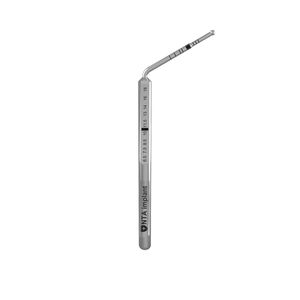
Dental implant surgery instrument kit
Add to favorites
Compare this product
fo_shop_gate_exact_title
Characteristics
- Procedure
- dental implant surgery
Description
**Tissue Punch
It cuts the gingiva in the position where the implant will be placed and allows to remove the gingival tissue. Enables seamless implant procedure.
Advantages of Small Incision:
Post-operative hemostatic effect is achieved due to the contact between the mucosa and the
abutment surface.
**Bone Shaping Drill (Round Drill)
It is used to straighten the bone.It is also used to obtain the implantable surface if the bone
starts thin and thickens downwards. If the bone is not straight, the slipping of the drill may result in undesired milling.
**Point Drill
It is used for marking.Allows easy positioning for other drills. Ø2.2 is suitable for use with
handle. Ø5.2 is not suitable for use with handle.
** Cortical Drill
t is recommended to be used as a on hard bones (D1 and D2) neck opener
**Initial Drill
It enables to open the cavity suitable for the desired depth in the correct position and direction. Using it together with the Handle prevents the correct position from being disrupted.
**Handle Guide
Acts as a guide by preventing the drills from slipping/misaligning.
**Anchor Drill
After the guide is placed in the patient's mouth and the patient is asked to bite. It is used for drilling through the sleeves (rings) on the fixed guide.
**Final Drill
It allows to open the cavity where the implant will be placed according to the size and diameter suitable for the implant fixture to be applied.
**Anchor Screw
After drilling, the guide is fixed to the patient's mouth with an anchor screw.
**Vertical Anchor (Bone Type (R/W))
It allows to measure the gingival length.
Catalogs
No catalogs are available for this product.
See all of NTA IMPLANT‘s catalogsRelated Searches
*Prices are pre-tax. They exclude delivery charges and customs duties and do not include additional charges for installation or activation options. Prices are indicative only and may vary by country, with changes to the cost of raw materials and exchange rates.






